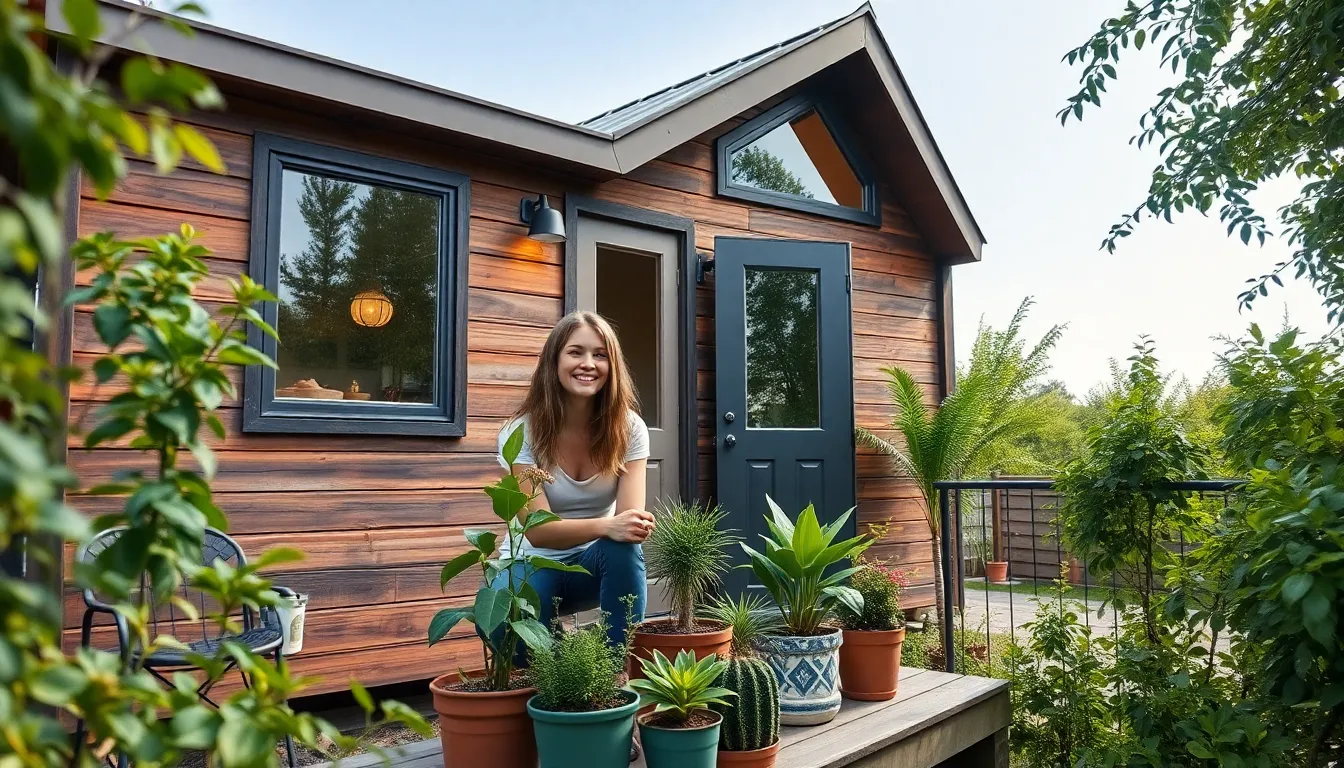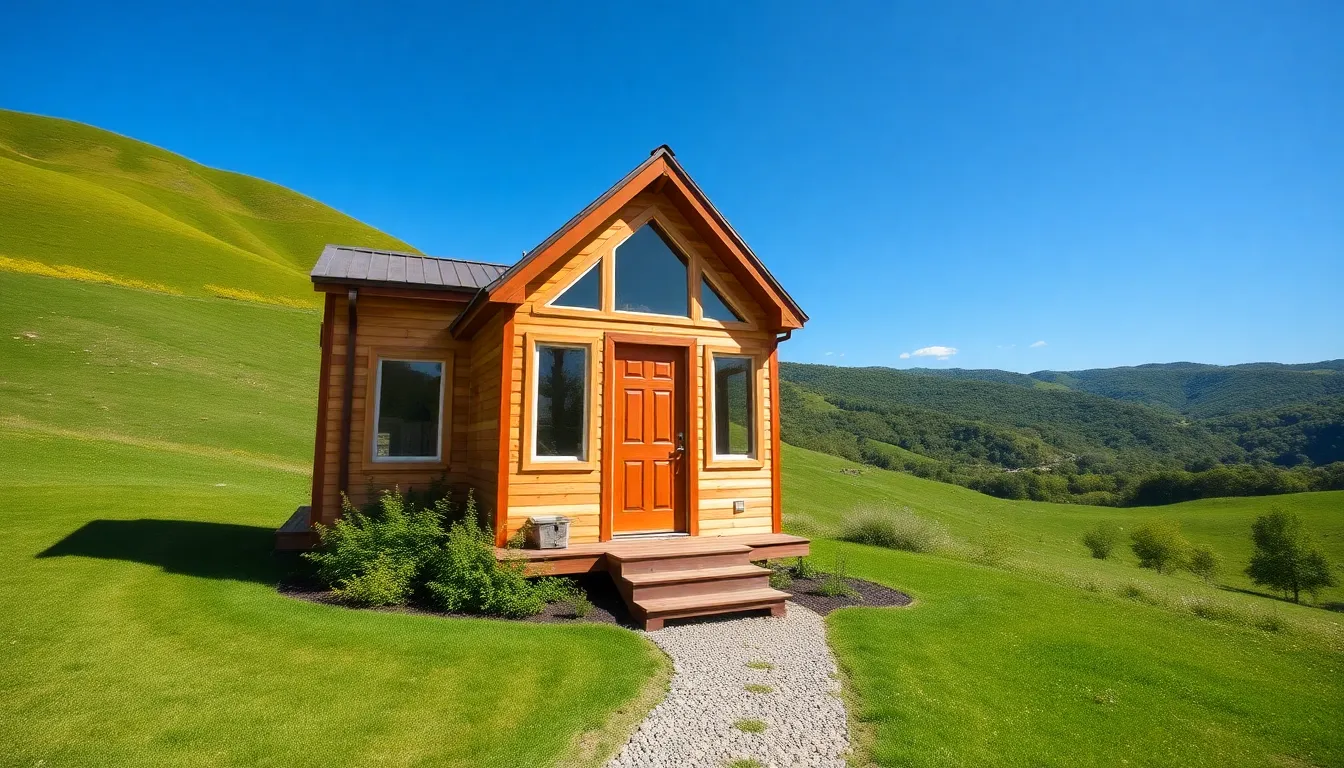Imagine waking up in a cozy space where every inch is designed to spark joy. Tiny home living isn’t just a trend; it’s a lifestyle revolution that’s catching fire faster than a marshmallow at a summer campfire. With the world leaning toward minimalism, these pint-sized abodes offer a perfect blend of charm and practicality, proving that bigger isn’t always better.
Table of Contents
ToggleOverview of Tiny Home Living
Tiny home living emphasizes a simplified, minimalist lifestyle that prioritizes functionality. Embracing smaller spaces enables residents to reduce their belongings, streamline daily routines, and save on expenses. Freedom from the financial burden of large mortgages often accompanies this choice, as smaller homes require less maintenance and lower utility costs.
Many tiny homes showcase innovative designs that maximize space efficiency. Adjustable furniture, multi-purpose areas, and clever storage solutions characterize these cozy environments. Residents often customize their layouts to reflect personal tastes while maintaining an efficient living area.
The appeal of tiny home living extends beyond just aesthetics and functionality. Environmental impact plays a significant role in this lifestyle choice. Smaller living spaces typically consume fewer resources and generate less waste, aligning with eco-conscious values. Statistics indicate that tiny homes can use 30% to 40% less energy compared to traditional houses.
Community living represents another trend within the tiny home movement. Many individuals choose to reside in tiny home villages, which foster connection and collaboration among residents. These communities often host shared resources, enhancing social interactions and support among neighbors.
In addition to individual benefits, tiny home living reflects broader societal shifts towards minimalism. It challenges cultural norms that equate success with larger homes and more possessions. Decision-makers in various sectors observe this trend, recognizing its potential to reshape urban planning and housing policies.
Overall, tiny home living offers an inspiring alternative lifestyle that promotes efficiency, sustainability, and community engagement. Increased interest in this movement continues to influence housing trends and personal choices nationwide.
Benefits of Tiny Home Living
Tiny home living offers multiple advantages that attract a diverse range of individuals. Financial savings represent a key benefit, as smaller homes generally come with lower mortgage payments and utility costs. Homeowners can save 30% to 40% on energy consumption compared to larger houses. Reduced maintenance expenses also contribute to financial freedom, allowing residents to allocate their resources toward experiences rather than possessions.
Environmental impact stands out as another notable advantage. Tiny homes typically consume less energy, which supports eco-conscious living. Many tiny homes utilize sustainable materials and renewable energy sources. Individuals contribute to reducing their carbon footprint through efficient space utilization and minimized resource consumption.
Minimalist lifestyle choices emerge naturally with tiny living. Owners often simplify their belongings and focus on what truly matters. This prioritization of meaningful possessions fosters a greater appreciation for personal experiences. Embracing a minimalist approach also encourages a less cluttered and more organized living space, which enhances overall well-being.
Challenges of Tiny Home Living
Navigating tiny home living comes with unique challenges. Residents often encounter space limitations and zoning regulations that impact daily life.
Space Limitations
Living in a tiny home means dealing with confined spaces. Limited square footage requires smart organization and minimalistic choices. Residents prioritize essential items while letting go of non-essential belongings. Adjusting to smaller kitchens, bathrooms, and living areas can prove challenging. Multi-functional furniture becomes crucial in maximizing functionality. Families or those who frequently host guests may find these constraints particularly difficult. Efficient storage solutions, such as built-in shelves or under-bed compartments, can alleviate some concerns.
Zoning Regulations
Zoning regulations present additional hurdles for tiny home owners. Local laws often complicate placement and development. Many areas restrict tiny home construction, adhering to traditional housing standards. Residents must navigate permits, which can be time-consuming and complex. Some municipalities lack clear definitions for tiny homes, creating ambiguity. Securing appropriate land is also a challenge, particularly in urban or densely populated regions. Given these hurdles, potential tiny home owners may face significant obstacles in establishing a permanent residence.
Design and Functionality
Efficient design and smart functionality characterize tiny home living. These homes prioritize space utilization and practical elements.
Innovative Storage Solutions
Creative storage solutions maximize limited space in tiny homes. Custom-built shelving and under-bed storage optimize every square inch. Vertical space often accommodates cabinets and racks, enhancing accessibility and organization. Multi-purpose furniture, like sofas that convert into beds, can serve as both seating and sleeping areas. Residents use hidden compartments in benches and stairs to stash away belongings, keeping the living area clutter-free. Innovative storage doesn’t just add to the aesthetic; it also promotes a functional atmosphere that encourages minimalism.
Sustainable Materials
Sustainability remains a core aspect of tiny home design. Builders frequently use reclaimed wood and recycled materials, reducing environmental impact. This approach aligns with the values of eco-conscious homeowners focused on lowering their carbon footprint. Insulation made from eco-friendly products boosts energy efficiency, leading to lower heating and cooling costs. Additionally, many tiny homes incorporate solar panels to harness renewable energy. Such choices not only support sustainability but also enhance the aesthetic appeal of these compact living spaces.
Community and Lifestyle
Tiny home living fosters a sense of belonging through shared values and communal experiences. Many individuals find themselves drawn to tiny home communities, which provide opportunities for collaboration and support.
Tiny Home Communities
Tiny home communities typically consist of small homes clustered together, creating an inclusive atmosphere. These villages often feature shared amenities like gardens, communal kitchens, and recreational areas. Residents share resources and skills, strengthening connections among community members. Living in such a setup encourages collaboration, with members participating in group activities and events that promote a sense of belonging. As a result, these environments help break down barriers that often exist in traditional neighborhoods.
Social Interactions
Social interactions thrive in tiny home settings, where close quarters naturally facilitate connections. Residents often engage in casual conversations while tending to gardens or sharing communal spaces. Neighbors become friends, allowing for support networks to form. These bonds enhance overall well-being and foster collaboration on projects, such as group gardening or community events. Additionally, promoting shared interests cultivates a welcoming atmosphere that encourages residents to share experiences and insights. The result is a vibrant, supportive community environment that prioritizes connection and shared living.
Conclusion
Tiny home living represents a transformative shift in how individuals view space and lifestyle. It champions a simpler existence that prioritizes meaningful experiences over material possessions. The blend of innovative design and community spirit cultivates a unique environment where residents can thrive while enjoying financial savings and reduced environmental impact.
Despite the challenges of space constraints and regulatory hurdles, the benefits of tiny living resonate with many seeking a more intentional way of life. This movement not only redefines homeownership but also encourages a deeper connection with one’s surroundings and neighbors. As more people embrace this lifestyle, it’s clear that tiny homes are more than just a trend—they’re a pathway to a fulfilling and sustainable future.







